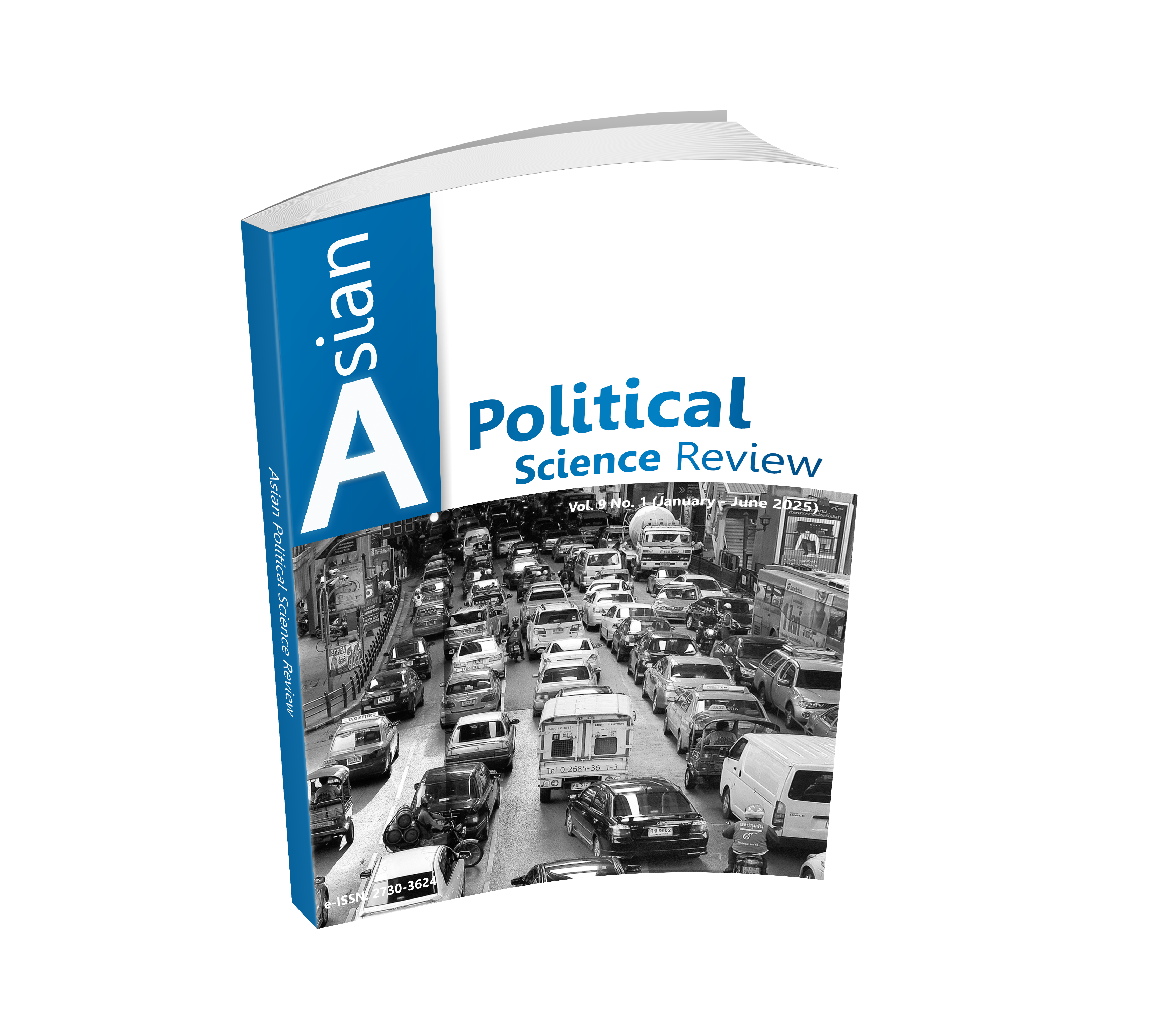NETWORK INNOVATION TO ENHANCE SPATIAL POTENTIAL BORDER ECONOMIC CITY WITH A QUADRUPLE HELIX MODEL
DOI:
https://doi.org/10.14456/apsr.2025.1Keywords:
Network Innovation, Border Economy, Quadruple Helix ModelAbstract
This research aims to study the spatial potential of border economic cities, to create a network innovation mechanism to enhance the spatial potential of border economic cities with a Quadruple Helix model, to study the guidelines for driving the enhancement of the spatial potential of border economic cities with network innovation, and to critique the study results to study policy alternatives to set as policy proposals to enhance the spatial potential of border economic cities. The study emphasized participatory action research methods with Stakeholders developing at the Phu doo International Point of Entry, using various qualitative data collection methods, including document studies, in-depth interviews, workshops, and focus groups. The study found that the impact of the COVID-19 pandemic has resulted in a lack of stimulation for tourism and the local economy. Under the spatial potential leading to the creation of a mechanism to drive development with primary mechanisms and secondary mechanisms from the network innovation group under 4 driver issues: tourism, logistics system, research and education, and economy) 4 enablers issues: controlling the COVID-19 situation, medicine and referrals, international relations, and peace and order to create a guideline to drive the elevation of spatial potential to policy proposals to drive the development of the area into a new growth city. Developing a logistics transport system linking international border trade, creating agreements in various dimensions and developing international relations, developing a medical and referral system, and preparing for emerging disease situations.
Downloads
References
Afonso, O., Monteiro, S., & Thompson, M. (2012). A growth model for the quadruple helix. Journal of Business Economics and Management, 13(5), 849-865.
Chainan, P., & Cadchumsang, J. (2017). Special Economic Zone Development Projects and Changes in Border Areas: A Preliminary Survey in the Context of Tak and Chiang Rai Provinces. Faculty of Sociology and Anthropology, 36(1), 103-127.
Department of Foreign Trade. (2020). Definition of border/transit trade. Retrieved from www.dft.go.th/bts/bts-trader.
Etzkowitz, H., & Leydesdorff, L. (2000). The dynamics of innovation: from National Systems and “Mode 2” to a Triple Helix of university–industry–government relations. Research Policy, 29(2), 109-123.
Mee-Udon, F. (2019). Border Trade and the Well-being of Local People: A Case Study of Communities at the Permanent Phu Du Border Checkpoint, Muang Chet Ton Subdistrict, Ban Khok District, Uttaradit Province. Bangkok: Thailand Science Research and Innovation.
Panichakarn, B. (2020). Developing roadmaps for smart and environmentally friendly transport Uttaradit Province. Phitsanulok: Naresuan University.
Piyanonthasin, W. (2017). The Development of Border Trade Area for Trading Investment and Improvement Quality of Life of Public People. Payap University Journal, 27(2), 1-13.
Songsivilai, S. (2018). The Structure and Mechanism for Driving the National Research and Innovation Strategy. The National Defence College of Thailand Journal, 60(3), 8-21.
Tangpanitanon, A. (2020). Approaches to development and Management Practices of Mukdahan Special Economic Zone. Journal of Management Science Nakhon Pathom Rajabhat University, 7(2), 14-24.

Downloads
Published
How to Cite
Issue
Section
License
Copyright (c) 2025 Authors

This work is licensed under a Creative Commons Attribution-NonCommercial-NoDerivatives 4.0 International License.











.png)


